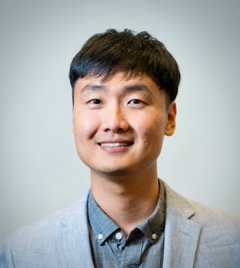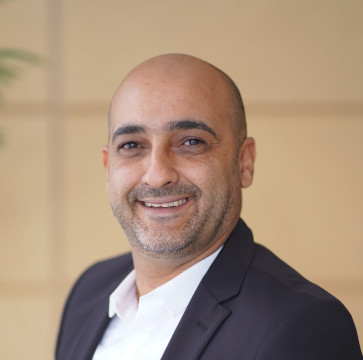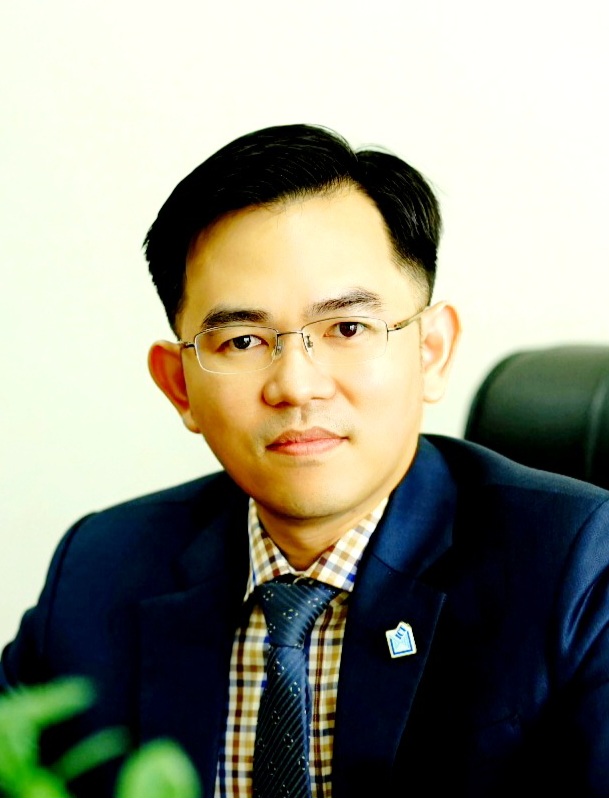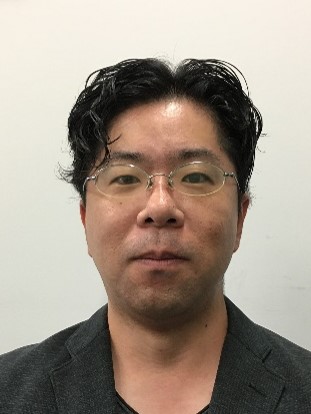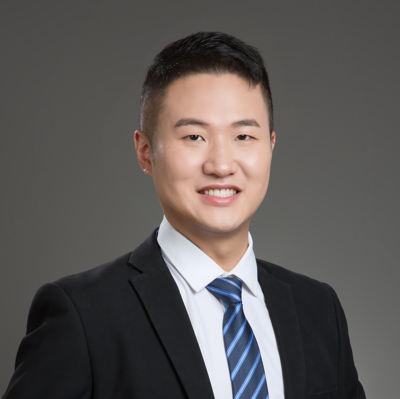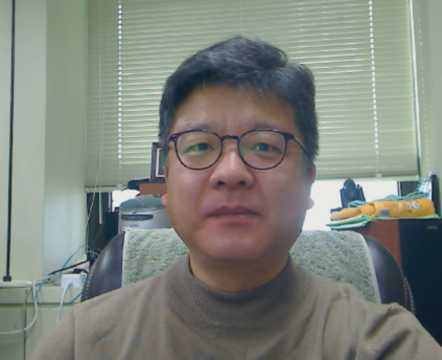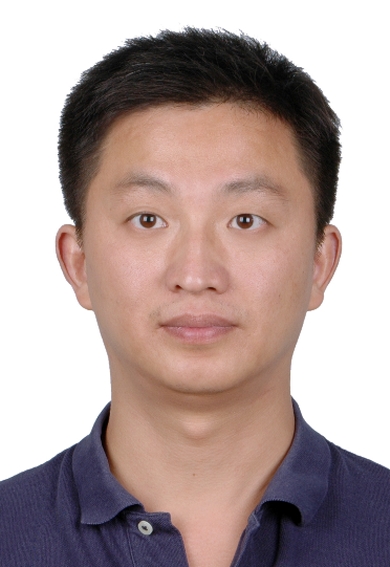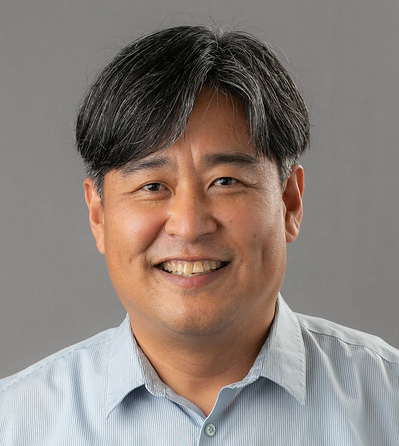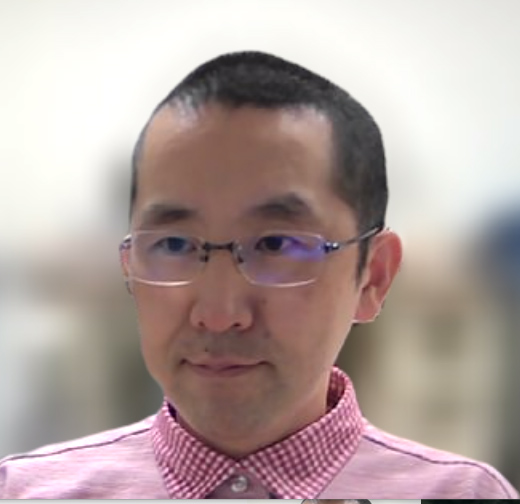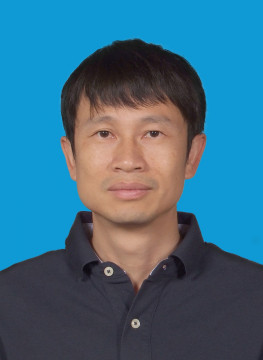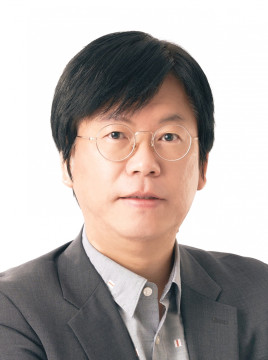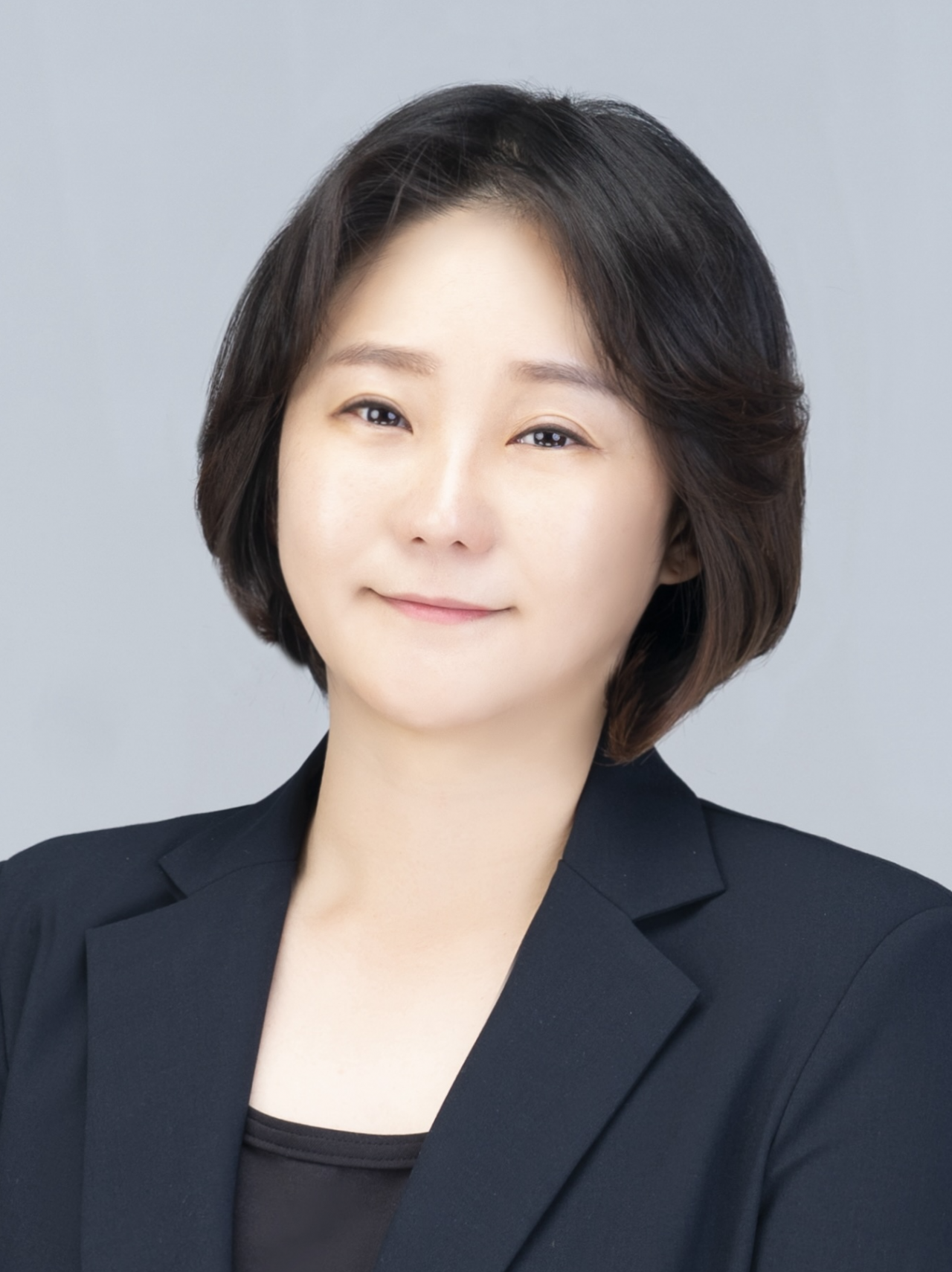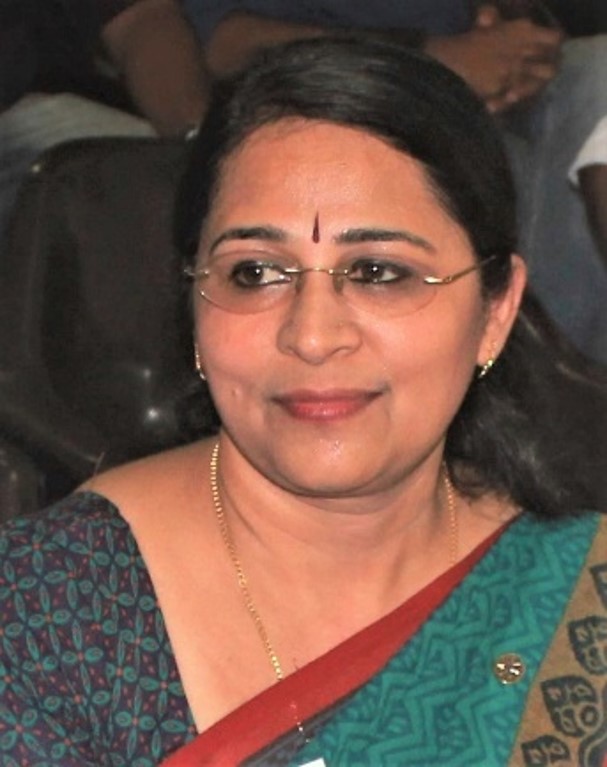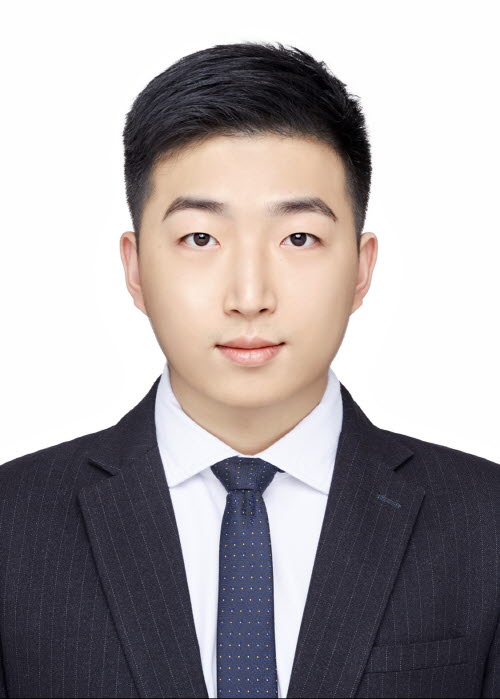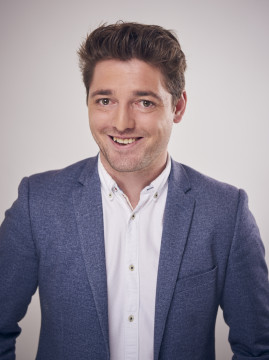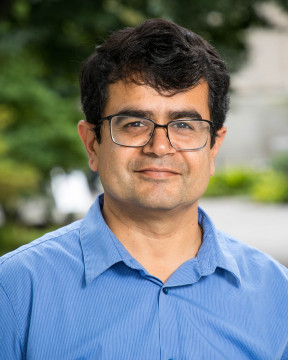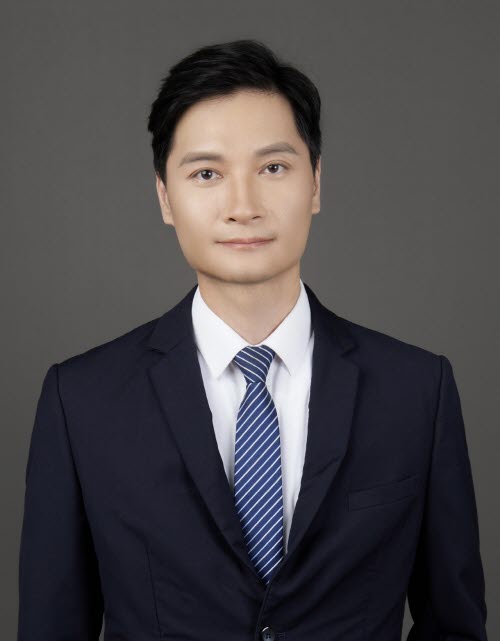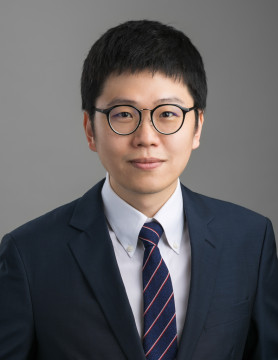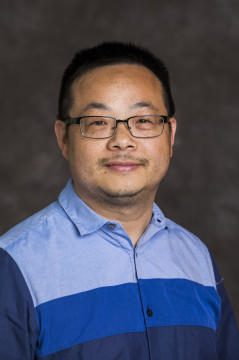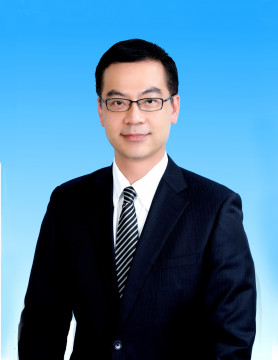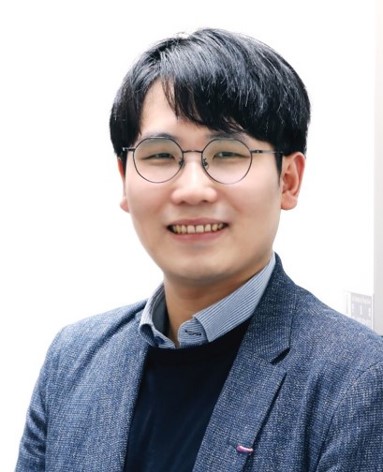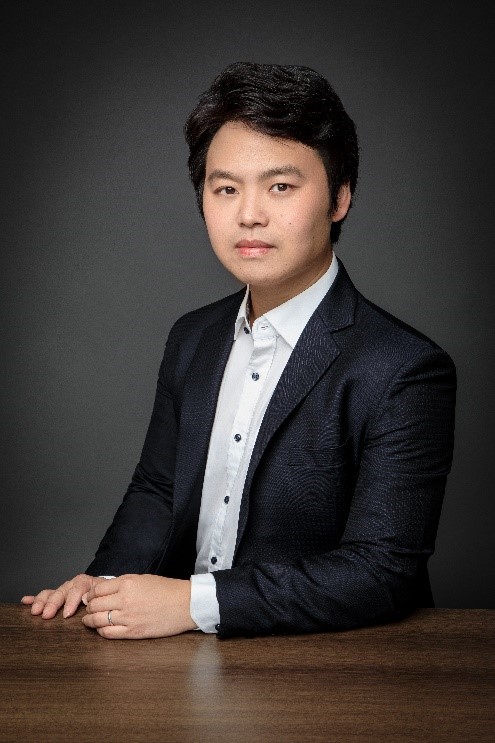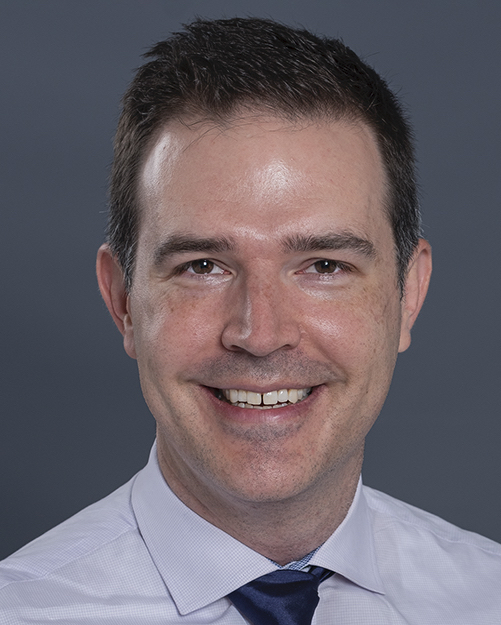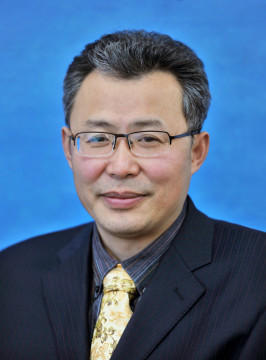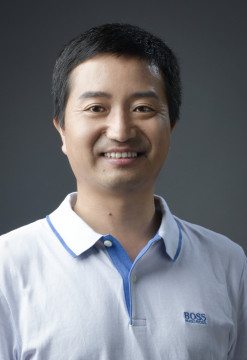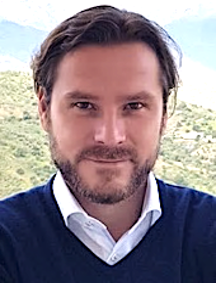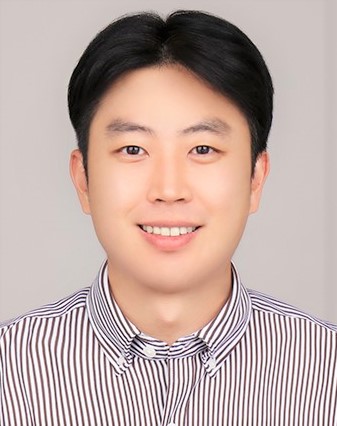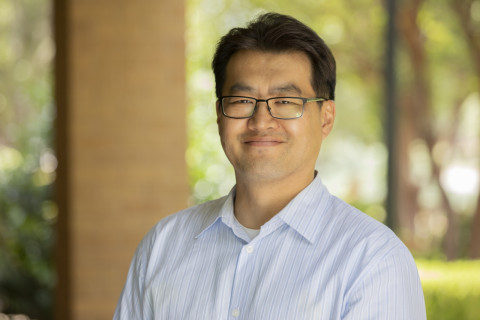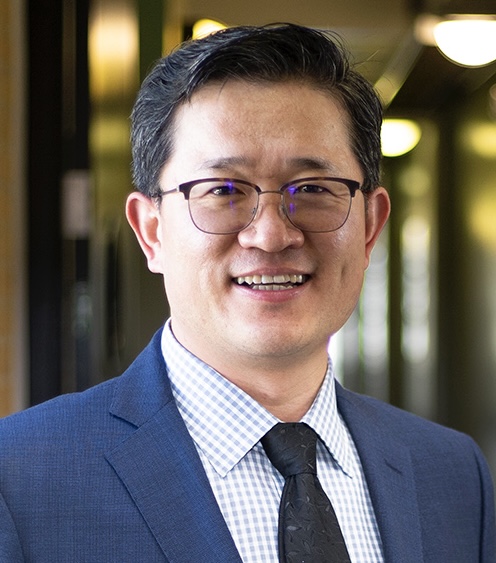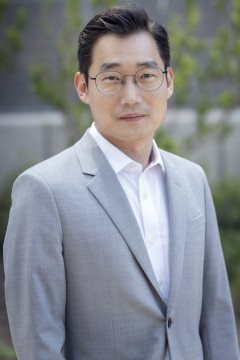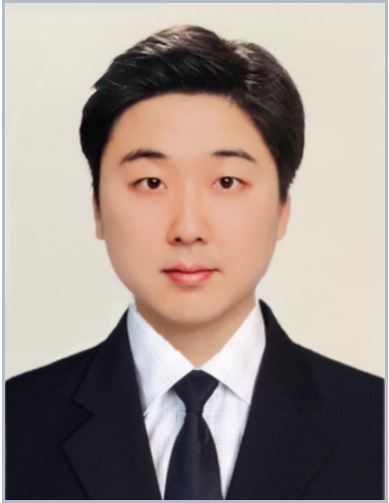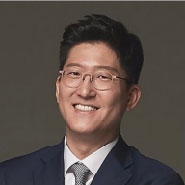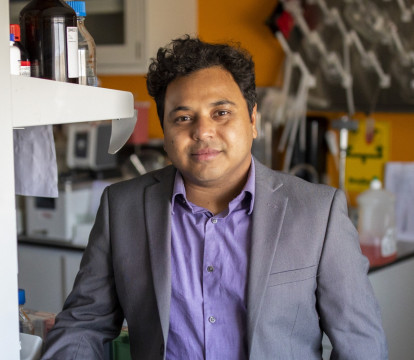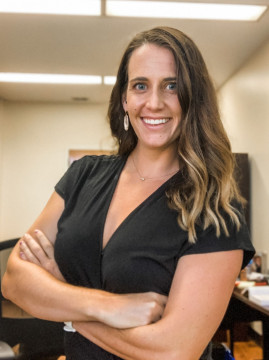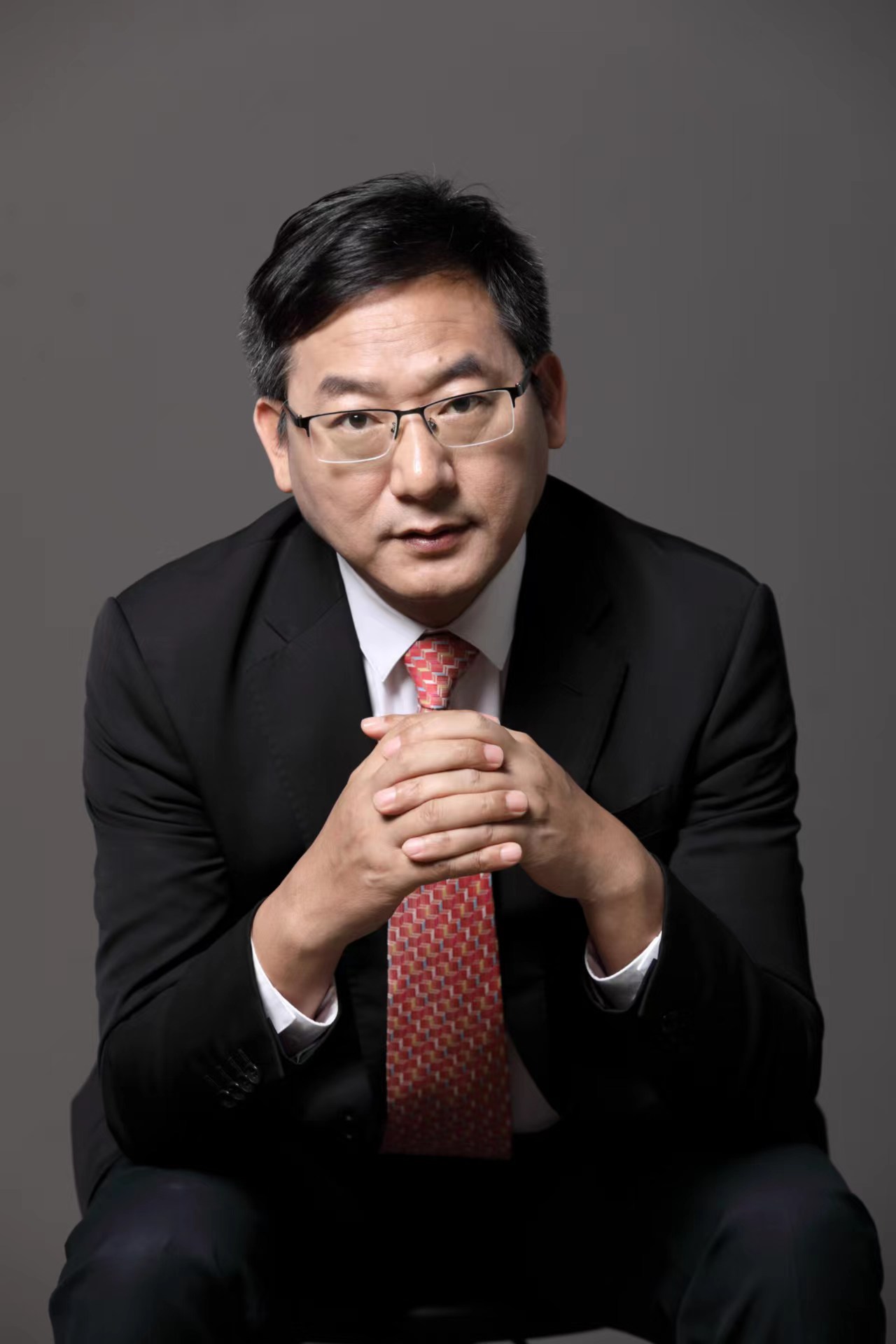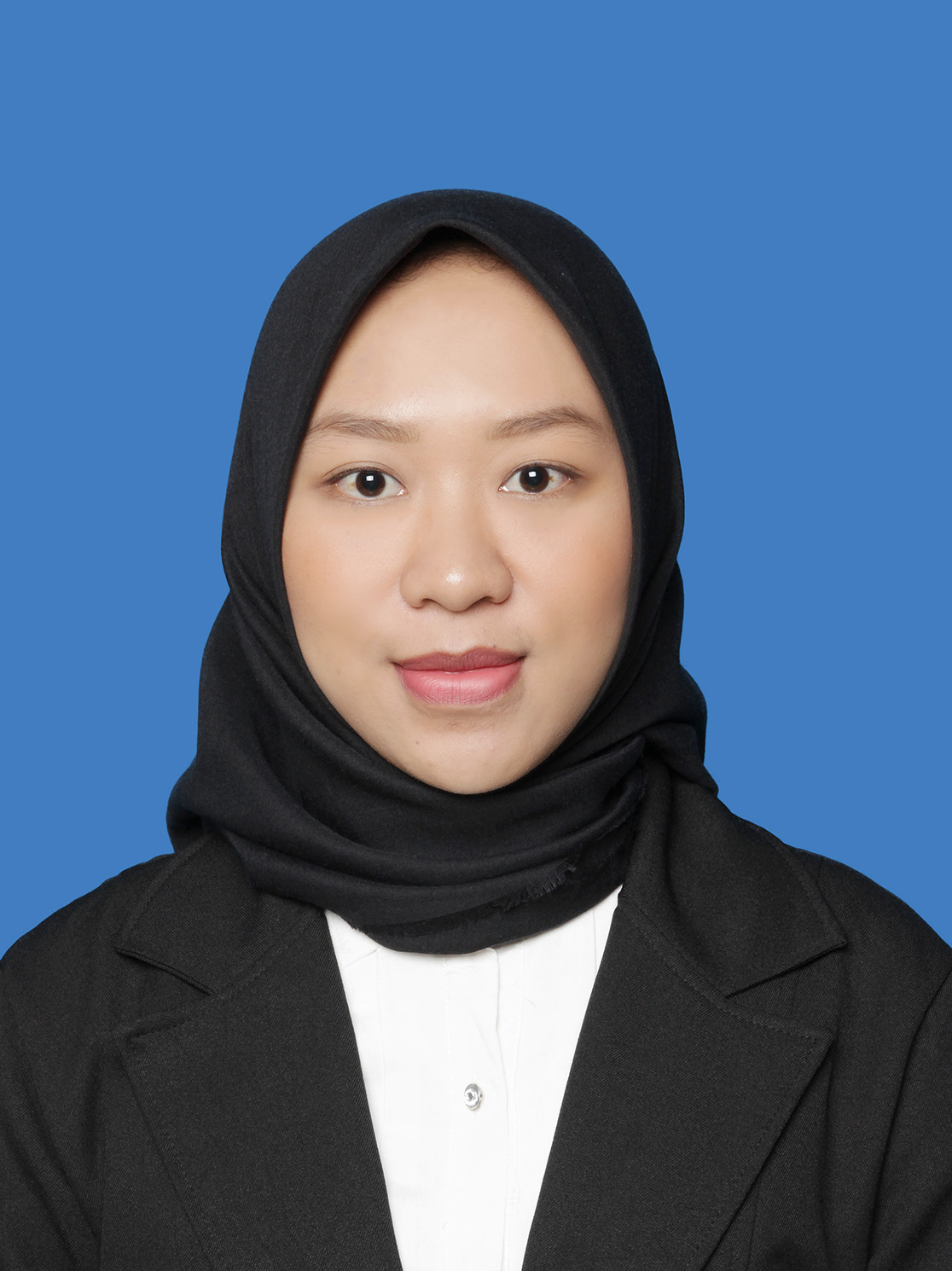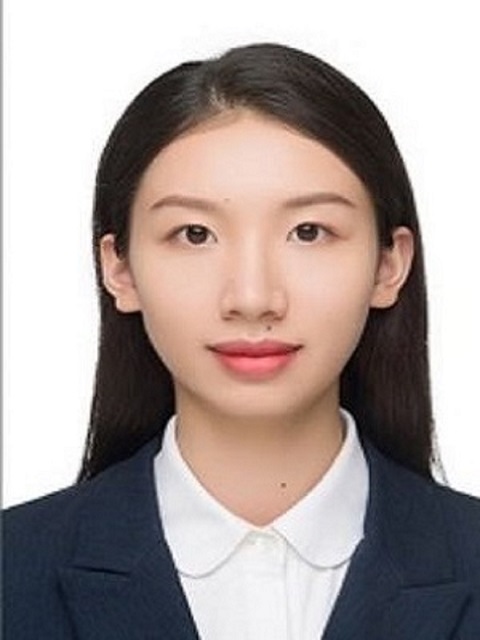Scientific Program
You can update your brief biography and profile picture on the [My Profile] page.
- Session TrackBiomaterials for theranostics
- Session TitleEngineering of biomaterials for drug delivery
- Session CodeSP-T03-0343
- Date & Time / RoomMay 28 (Tue) 9:30~11:00 / Room 324-A
- Organizer
-
Yoon Shin Park (Chungbuk National University, Korea, Republic of)
- Chair
-
Yongzhuo Huang (Shanghai Institute of Materia Medica, China)
Jinhwan Kim (UC Davis, USA)
- Keynote Speaker
-
9:30~9:55 : Engineering the nanomaterials for the image-guided drug delivery and controlled release Stanislav Emelianov (Georgia Tech, USA)
- Invited Speaker
-
Allan E. David (Auburn University, USA)
10:10~10:25 : Targeting tumor metabolism using advanced drug delivery systems for treatment enhancement Yongzhuo Huang (Shanghai Institute of Materia Medica, China)
Aharon (Roni) Azagury (Ariel University, Israel)
10:40~10:55 : Natural-Based Liposomes for Versatile Drug Delivery Applications Dai Hai Nguyễn (Institute of Chemical Technology - Vietnam Academy of Science and Technology, Vietnam)
- Session TrackBiomaterials for theranostics
- Session TitleNanomedicine for Immunotherapeutics
- Session CodeSP-T03-0351
- Date & Time / RoomMay 27 (Mon) 14:40~16:10 / Room 324-A
- Organizer
-
In-Kyu Park (Chonnam National University, Korea, Republic of)
- Co-organizer
-
Won Jong Kim (Pohang University of Science and Technology (POSTECH), Korea, Republic of)
- Chair
-
In-Kyu Park (Chonnam National University, Korea, Republic of)
Chien-Wen Jeff Chang (National Tsing Hua University, Chinese Taipei)
- Keynote Speaker
-
14:40~15:05 : Control of Nitric Oxide for the Treatment of Inflammatory Disease Won Jong Kim (Pohang University of Science and Technology (POSTECH), Korea, Republic of)
- Invited Speaker
-
15:05~15:20 : Nano-Sensor-Based Isolation and Characterization of Multidrug-Resistant Human Cancer Cells Chien-Wen Jeff Chang (National Tsing Hua University, Chinese Taipei)
15:20~15:35 : mRNA Vaccine Delivery using Polymeric Platforms for Global Health Equity Jooli Han (Massachusetts Institute of Technology (MIT), USA)
15:35~15:50 : Modification of antigenicity of cancer cells by conjugate consisting of hyaluronic acid and foreign antigen Shinichi Mochizuki (The University of Kitakyushu, Japan)
- Oral Presenter
-
15:50~16:00 : Biomedical Application of Emerging NanoAlum Beyond Drug Delivery System Lingxiao Zhang (Aarhus University, Denmark)
16:00~16:10 : Immunomodulatory, highly respirable yeast beta-glucan microparticles prepared by pressurized gas expanded liquid (PGX) technology to treat idiopathic pulmonary fibrosis Nate Dowdall (McMaster University, Canada)
- Session TrackBiomaterials for theranostics
- Session TitleFerroptosis-mediated cancer target therapy (Sponsored by Methods, an Elsevier's interdisciplinary journal in life and medical sciences)
- Session CodeSP-T03-0100
- Date & Time / RoomMay 29 (Wed) 16:30~18:00 / Room 324-A
- Organizer
-
Su-Geun Yang (Inha University, Korea, Republic of)
- Chair
-
Zheyu Shen (Southern Medical University, China)
Su-Geun Yang (Inha University, Korea, Republic of)
- Keynote Speaker
-
16:30~16:55 : Magnetic Resonance Imaging Contrast Agents and Their Applications for Tumor Ferroptosis Therapy Zheyu Shen (Southern Medical University, China)
- Invited Speaker
-
16:55~17:10 : Photocatalytic nanoparticles for combination therapy of KRAS mutant colorectal cancer via controlled enzymatic pathway of ferroptosis Su-Geun Yang (Inha University, Korea, Republic of)
17:10~17:25 : DNA/Drug nanocomplexes for efficient and safe cancer therapy: Facile, efficient, scalable, and safe for clinical translation Young Jik Kwon (University of California, Irvine, USA)
- Oral Presenter
-
17:25~17:35 : Iron-Based Nanomaterials for Tumor Theranostics: Applications and Challenge Yanglong Hou (Sun Yat-Sen University, China)
17:35~17:45 : pH-sensitive Single-Atom Catalyst with Natural Immunoadjuvant for Precising Catalytic Therapy and Amplifying Immunity of Ferroptosi Hung-Wei Cheng (National Yang Ming Chiao Tung University, Chinese Taipei)
17:45~17:55 : Targeted sonodynamic therapy mediated by ultrasound-controlled release platelets induces cancer cell ferroptosis and macrophage repolarization in glioblastom Xiao Chen (Wuhan University, CHINA, China)
- Session TrackBiomaterials for theranostics
- Session TitleStimuli-Responsive Macromolecular Assembly for Theranostics
- Session CodeSP-T03-0101
- Date & Time / RoomMay 31 (Fri) 11:20~12:50 / Room 324-A
- Organizer
-
Beom Jin Kim (University of Ulsan, Korea, Republic of)
- Chair
-
Beom Jin Kim (University of Ulsan, Korea, Republic of)
Ja-Hyoung Ryu (UNIST, Korea, Republic of)
- Keynote Speaker
-
11:20~11:50 : Enzyme-Instructed Intracellular Peptide Assemblies Bing Xu (Brandeis University, USA)
- Invited Speaker
-
11:50~12:05 : Selective death of cancer cells induced by the self-assembly of a peptide amphiphile that is responsive to an overexpressed kinase Tatsuo Maruyama (Kobe University, Japan)
12:05~12:20 : New strategies based on self-assembly for Theranostics Gaolin Liang (Southeast University, China)
12:20~12:35 : Enzyme assisted peptide folding and self-assembly Zhimou Yang (Nankai University, China)
12:35~12:50 : Proton-Catalyzed Self-Assembly to Control Intracellular Assemblies Formation of Peptide Huaimin Wang (Westlake University, China)
- Session TrackBiomaterials for theranostics
- Session TitleBiomaterials for theranostics
- Session CodeSP-T03-0133
- Date & Time / RoomMay 30 (Thu) 13:40~15:10 / Room 324-A
- Organizer
-
Sei Kwang Hahn (POSTECH, Korea, Republic of)
- Chair
-
Guosong Hong (Stanford University, USA)
Hyunjoo Jenny Lee (KAIST, Korea, Republic of)
- Keynote Speaker
-
13:40~14:05 : Smart Wearable Materials and Devices for Theranostic Healthcare Applications Sei Kwang Hahn (POSTECH, Korea, Republic of)
- Invited Speaker
-
Guosong Hong (Stanford University, USA)
14:20~14:35 : Ultrasound-Mediated Neuromodulation Hyunjoo Jenny Lee (KAIST, Korea, Republic of)
14:35~14:50 : Atomically precise molecular materials of noble metal for Real-Time Monitoring and Therapeutic Management of Alzheimer's Diseas Jayasree R S (Sree Chitra Tirunal Institute for Medicla Sciences and Technology, India)
- Oral Presenter
-
14:50~15:00 : Biomimetic targeting nanoplatform for atherosclerosis theranostics via photoacoustic diagnosis and “hand-in-hand” immunoregulation Boxuan Ma (Sir Run Run Shaw Hospital, College of Medicine, Zhejiang University, China)
15:00~15:10 : Glycogen nanoparticles as next generation biomaterials in nanomedicine Quinn Besford (Leibniz Institute for Polymer Research, Germany)
- Session TrackBiomaterials for theranostics
- Session TitleBiomaterials for Drug Delivery and Tissue Regeneration
- Session CodeSP-T03-0138
- Date & Time / RoomMay 30 (Thu) 9:30~11:00 / Room 324-A
- Organizer
-
Yunching Chen (National Tsing Hua University, Chinese Taipei)
- Chair
-
Yunching Chen (National Tsing Hua University, Chinese Taipei)
Che-Ming Jack Hu (Academia Sinica, Chinese Taipei)
- Keynote Speaker
-
Samir Mitragotri (Harvard University, USA)
- Invited Speaker
-
Shyh-Dar Li (University of British Columbia, Canada)
10:10~10:25 : Wireless charging-mediated angiogenesis and nerve repairby adaptable microporous hydrogels Shang-Hsiu Hu (National Tsing Hua University, Chinese Taipei)
10:25~10:40 : Organ and cell selective delivery using synthetic lipid nanoparticle for mRNA delivery Qiaobing Xu (Tufts University, USA)
10:40~10:50 : Pseudovirus-like particles for RNA self-packaging and delivery Yu-Chen Hu (National Tsing Hua University, Chinese Taipei)
- Session TrackBiomaterials for theranostics
- Session TitleBiomaterials for Image-guided Therapy
- Session CodeSP-T03-0153
- Date & Time / RoomMay 29 (Wed) 13:40~15:10 / Room 324-A
- Organizer
-
Wooram Park (Sungkyunkwan University, Korea, Republic of)
- Chair
-
Wooram Park (Sungkyunkwan University, Korea, Republic of)
Chun Gwon Park (Sungkyunkwan University, Korea, Republic of)
- Keynote Speaker
-
13:40~14:05 : Theranostic carriers for image guided nano-immuno cancer therapy Dong-Hyun Kim (Northwestern University, USA)
14:05~14:30 : Dynamic Nano-Assemblies for Biological Sensing, Imaging and Regulation Daishun Ling (Shanghai Jiao Tong University, China)
- Invited Speaker
-
14:30~14:45 : Ion-responsive Nano-probe Fang Yuan Li (Zhejiang University, China)
14:45~15:00 : In situ Cancer Immunization Utilizing a Synergistic Approach of Irreversible Electroporation and Immunostimulatory Nanoparticles
Wooram Park (Sungkyunkwan University, Korea, Republic of)
- Session TrackBiomaterials for theranostics
- Session TitleBiomaterials for Biomedical Imaging: Applications and Challenges
- Session CodeSP-T03-0173
- Date & Time / RoomMay 29 (Wed) 9:30~11:00 / Room 324-A
- Organizer
-
Hua Ai (West China Hospital, Sichuan University, China)
- Chair
-
Yanglong Hou (College of Engineering, Peking University, China)
Brent Weinberg (Emory University School of Medicine, USA)
- Keynote Speaker
-
Ning Gu (Southeast University, China)
- Invited Speaker
-
9:55~10:10 : Ultrasound Contrast Nanoparticles and Their Diagnosis and Treatment in Chronic Diseases Aiguo Wu (Ningbo Institute of Materials Technology & Engineering, Chinese Academy of Sciences, China)
10:10~10:25 : Strategies to Promote Cancer Nanomedicine Clinical Translation Twan Lammers (RWTH Aachen University Clinic, Germany)
10:25~10:40 : Challenges and opportunities in MRI contrast agents Brent Weinberg (Emory University School of Medicine, USA)
10:40~10:55 : MRI nanoprobes: design considerations and biological responses Hua Ai (West China Hospital, Sichuan University, China)
- Session TrackBiomaterials for theranostics
- Session TitleExtracellular vesicles-based nanomedicine for theranostics
- Session CodeSP-T03-0358
- Date & Time / RoomMay 27 (Mon) 13:00~14:30 / Room 324-A
- Organizer
-
Kyung Min Park (Incheon National University, Korea, Republic of)
- Chair
-
Michael Davis (Emory University, USA)
Han Young Kim (The Catholic University of Korea, Korea, Republic of)
- Keynote Speaker
-
Michael Davis (Emory University, USA)
- Invited Speaker
-
13:25~13:40 : Versatility of Exosomes for Cancer Therapy Donovan (Dong In) Kim (University of Oklahoma, USA)
Han Young Kim (The Catholic University of Korea, Korea, Republic of)
13:55~14:10 : Cellular function recovery through rejuvenation effect of exosome-mimicking nanovesicles extracted from stem cells Suk Ho Bhang (School of Chemical Engineering / Sungkyunkwan University, Korea, Republic of)
- Oral Presenter
-
14:10~14:20 : Exploring exosome potential for bone healing with ceramic scaffolds Ekaterina Maevskaia (University of Zurich, Switzerland)
- Session TrackBiomaterials for theranostics
- Session TitleBiomaterial-assisted gene therapy to treat musculoskeletal disorders
- Session CodeSP-T03-0353
- Date & Time / RoomMay 28 (Tue) 13:40~15:10 / Room 324-A
- Organizer
-
Nicholas Dunne (Dublin City University, Ireland)
- Chair
-
Nicholas Dunne (Dublin City University, Ireland)
Ahmed Elkashif (Queen's University Belfast, United Kingdom)
- Keynote Speaker
-
13:40~14:05 : Peptide-microRNA nanoparticles delivered via a thermoresponsive hydrogel for enhanced bone regeneration Helen McCarthy (Queen's University Belfast, United Kingdom)
- Invited Speaker
-
14:05~14:20 : Nanoparticle-mediated non-viral gene editing for in utero treatment of Duchenne muscular dystrophy Aijun Wang (University of California, Davis, USA)
- Oral Presenter
-
14:20~14:30 : Delivery of microRNA loaded nanoparticles via a 3D printed PEG-chitosan-PCL wound dressing Ahmed Elkashif (Queen's University Belfast, United Kingdom)
14:30~14:40 : Urinary Extracellular Vesicles as Therapy in Genetic Kidney Disease Eunji Chung (University of Southern California, USA)
14:40~14:50 : Plasmid DNA Mono-Ion Complexes with Mono-cationic PEGs for Muscular Gene Delivery Shoichiro Asayama (Tokyo Metropolitan University, Japan)
14:50~15:00 : Targeting ROS-induced osteoblast senescence and RANKL production by Prussian blue nanozyme based gene editing platform to reverse osteoporosis Huihui Wang (Yangzhou University, China)
15:00~15:10 : Bone-targeted nanoparticle-mediated osteoimmunomodulation for enhanced fracture healing Danielle Benoit (University of Oregon, USA)
- Session TrackBiomaterials for theranostics
- Session TitlePlatform technology for theranostics
- Session CodeSP-T03-0344
- Date & Time / RoomMay 27 (Mon) 16:30~18:00 / Room 324-A
- Organizer
-
Yong Kyu Lee (KNUT, Korea, Republic of)
- Chair
-
Youngwook Won (University of North Texas, USA)
Hwan Kim (KNUT, Korea, Republic of)
- Keynote Speaker
-
16:30~16:55 : Protein-based cell engineering for targeted cancer therapy Youngwook Won (University of North Texas, USA)
- Invited Speaker
-
16:55~17:10 : A theranostic approach to high tissue parenchymal accumulation of nanoparticles Jayoung Kim (University of North Texas Health Science Center, USA)
Md. Nurunnabi (School of Pharmacy at the University of Texas at El Paso, USA)
17:25~17:40 : Theranostic Applications of Polymersomes with Dual Agent Loading in Computed Tomography and Magnetic Resonance Imaging Jessica Larsen (Clemson University, USA)
17:40~17:55 : Nano-adaptor for Antibody Delivery Jun Wang (South University of Science and Technology, China)
- Session TrackBiomaterials for theranostics
- Session TitleSelf-assembled and stimuli responsive nanobiomaterials for delivery and targeting of biological drugs
- Session CodeSP-T03-0109
- Date & Time / RoomMay 31 (Fri) 9:30~11:00 / Room 324-A
- Organizer
-
Alejandro Sosnik (Technion Israel Institute of Technology Technion Research and Development Foundation Ltd, Israel)
- Chair
-
HyunJin Kim (Inha University, Korea, Republic of)
- Keynote Speaker
-
9:30~9:55 : Self-assembling nanobiomaterials for the safe and efficient delivery of complex nucleic acid payloads: heteroatomic tuning and supramolecular insights Omar F. Khan (University of Toronto, Canada)
- Invited Speaker
-
9:55~10:10 : Overcoming the barrier - Topical gene therapy of skin and lung Sarah Hedtrich (Berlin Institute of Health - Charite, Germany)
- Oral Presenter
-
10:10~10:20 : H2O2-activatable and self-immolative prodrug nanoassemblies as novel nanomedicine with cooperative therapeutic actions Dongwon Lee (Jeonbuk National University, Korea, Republic of)
10:20~10:30 : Stimuli-responsive polymersomes-enabled activatable therapeutic nanoreactors for tumor-specific cancer therapy Junjie Li (Kyushu University, Japan)
10:30~10:40 : PEGylated Carbon Nanohorn-Based Nanocarrier for Targeted Delivery to Enhance Phototherapy Efficacy in Cancer Treatment Fitriani Jati Rahmania (National Taiwan University of Science and Technology, Chinese Taipei)
10:40~10:50 : Mimicking amelogenesis to remineralize enamel through co-assembly of PTL fibrils and CMC/ACP Yangyang Ye (Tianjin Medical University, China)

 1
1 



